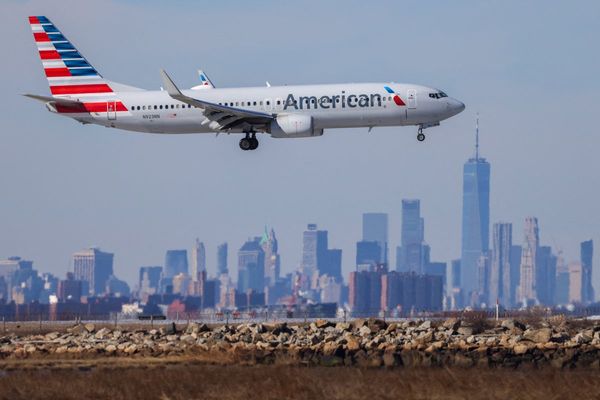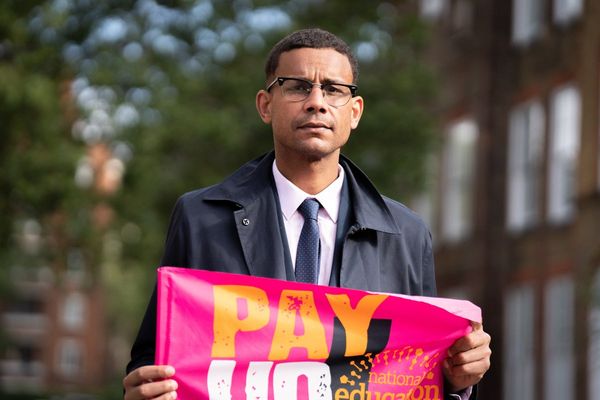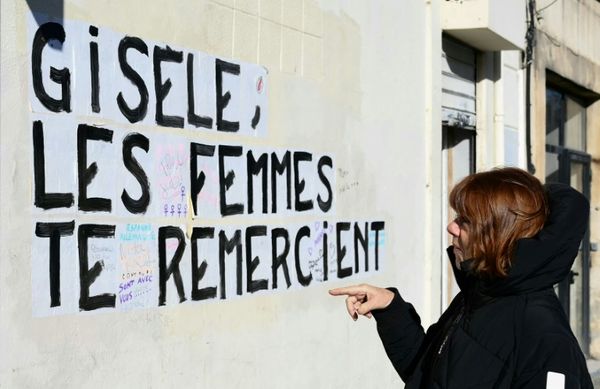
Orestes, a Cuban black-market businessman, is doing something that should be unremarkable. From his living room in central Havana, he’s taking US dollars from a tourist and exchanging them for Cuban pesos.
“This moment is the worst moment in the history of Cuba, about economy,” Orestes says. Like many people I speak to, he declines to provide his last name for fear of retribution for his anti-government stance.
The 63-year-old also sells basic goods such as bread and beer, bought to supplement government food rations. Cuba — a country with no privately owned supermarkets (or official currency exchanges) and shortages of everything from food to medicine — is a fertile ground for flourishing black markets.
With triple-digit inflation making Cuba’s domestic currency increasingly worthless, US dollars are priceless — and the communist regime knows it. Informal exchanges have been a mainstay of the Cuban economy since the fall of the Soviet Union, and are largely tolerated by the government to combat food shortages.

President Miguel Díaz-Canel Bermudez touted 2021 economic reforms as the key to securing critical supply lines for the island; Cuba imports between 70% and 80% of its food. Key to the overhaul was the implementation of a digital currency known as moneda libremente convertible, or MLC, designed to put foreign currencies in the hands of the government.
Cuba recently endured its most severe economic downturn since the fall of the Soviet Union. Under the leadership of Fidel Castro, Cuba held strong economic and military ties with the Soviet Union until its collapse in the early 1990s, and the ensuing social crisis became known as the “special period”.
At the beginning of 2021, cheap Venezuelan oil dried up, Cold War-era American sanctions were tightened in the dying days of the Trump administration, and the COVID-19 pandemic decimated tourism to the island.
The Cuban government responded by scrapping its dual currency system, which had been in place since 1993. The Cuban convertible peso (CUC), which was in circulation alongside the Cuban peso, was replaced by the MLC digital currency. The old system was widely seen to be fuelling inequality because unskilled workers like taxi drivers were being paid in a CUC, which carried more value.

The new system was sold as a win-win: Cubans could load US dollars on to their MLC cards to buy “luxury” goods such as fans in state-owned stores, and the government could accumulate foreign currencies to service debts and purchase critical imports.
But Ricardo Torres Perez, a Cuban economist at the American University in Washington, describes the switch as a failed policy: “They got the timing very wrong in the midst of a pandemic. [There is] no way that could have worked.”
The peso underwent one of the largest currency devaluations in Latin America. While the official exchange rate is 24 pesos for US$1, the black market rate is closer to 200 pesos for every dollar. The “dollarisation” of the Cuban economy fuelled inflation that economists say is at least 100%, and possibly reached as high as 500% in 2021, according to Reuters analysis.
US sanctions and underdeveloped local industries mean Cuba has a critical shortage of export industries to rely on for economic growth. Even sugar, the industry on which the nation is built, has collapsed. Annual exports were sitting at 7 million tonnes in the 1980s (with about half going to the Soviet Union); now it’s roughly half a million tonnes.
It’s Cuba’s young people who are left with the least hope. Dayron, 26, studied at university for four years but now delivers food in Havana on an electric bicycle: “The government guarantees you a job, but the job is not good. It’s good in the sense that it’s a good job, but it doesn’t have good pay, good profit.”
Reverential murals of Cuba’s famous revolutionaries, from Fidel Castro to Che Guevara, are everywhere in Havana. But instead of following in their footsteps, many young Cubans are choosing to flee.

“We young people here do not want a revolution. We want to leave here, Cuba. Because every day it gets worse. There is no way to be free. The only way is to leave Cuba,” Dayron says.
Last year nearly 250,000 Cubans, or 2% of the population, migrated to the US, according to government data. Susan Eckstein, professor of sociology and global studies at Boston University, says emigration is exceeding even the numbers seen after the fall of the Soviet Union.
And the people fleeing, she says, are precisely those who Cuba needs most: “Brain drain is a crucial factor that is going to make it difficult for the Cuban economy to rebound.”
Perez says he sees little prospect of the communist regime changing tack without a popular uprising: “[The Cuban government doesn’t] have the political will to reform the economic model, because for them economic change is equivalent to losing their grip on power.”
Experts agree the key to prosperity for the Caribbean country is likely to require rekindling old alliances, 31 years after the breakup of the Soviet Union.
“The future for Cuba is in the hands of a global power, like China or even Russia. The way I see it is essentially them coming to the rescue,” says Perez. “I think the Cuban government is now betting on global geopolitics for survival.”

There is evidence of a tightening of relations between Moscow and Havana. In late June, a Cuban delegation returned from Moscow where a new trade agreement was formalised, promising to boost sugar exports, tourism and oil supply to the island, Reuters reported.
Citing Russia’s defence ministry, the agency also reported that at a meeting of defence ministers in Moscow, joint “technical military” projects were discussed.
Eckstein draws a line between Russia’s war in Ukraine and the fostering of closer ties with Cuba: “This is geopolitics at work, ‘Miami’s enemy is my friend.’ The US is very aggressively attacking Russia in the context of Ukraine, so Putin sees reason to work with the US enemies. So I think that’s what’s behind it on the Russian part. On the Cuban part, I think it’s get what you can, where you can.”
Cubans who lived through Cuba’s heyday in the Soviet era, such as the black-market businessman Orestes, are left to rue where it all went wrong: “It’s too sad because we trust in the revolution during a long time, and now I don’t know what happened. The most incredible [thing] is we see people from the government with Mercedes-Benz, nice houses, nice everything and people every time more poor. This is the trouble in Cuba.”







